Drilling is a complex interaction of machinery and humans that has radically changed over more than a century in the oil field. Automation has been part of the long, continuous effort of process improvement.
While giant technological improvements make the headlines, continuous small steps generate sustainable change and ultimately lead to significant progress. In general, product development, especially industry-changing innovations, can be seen as a never-ending struggle for process improvement and optimization.
NOV has been at the forefront of this automation journey, introducing the NOVOS reflexive drilling system in 2015 and using it as the steppingstone toward further process autonomy. The ATOM RTX technology platform, which incorporates mechanization and the use of robotic systems on the rig floor as well as process control systems, was a natural next step in the automation transformation of traditional drilling rig processes and operations.
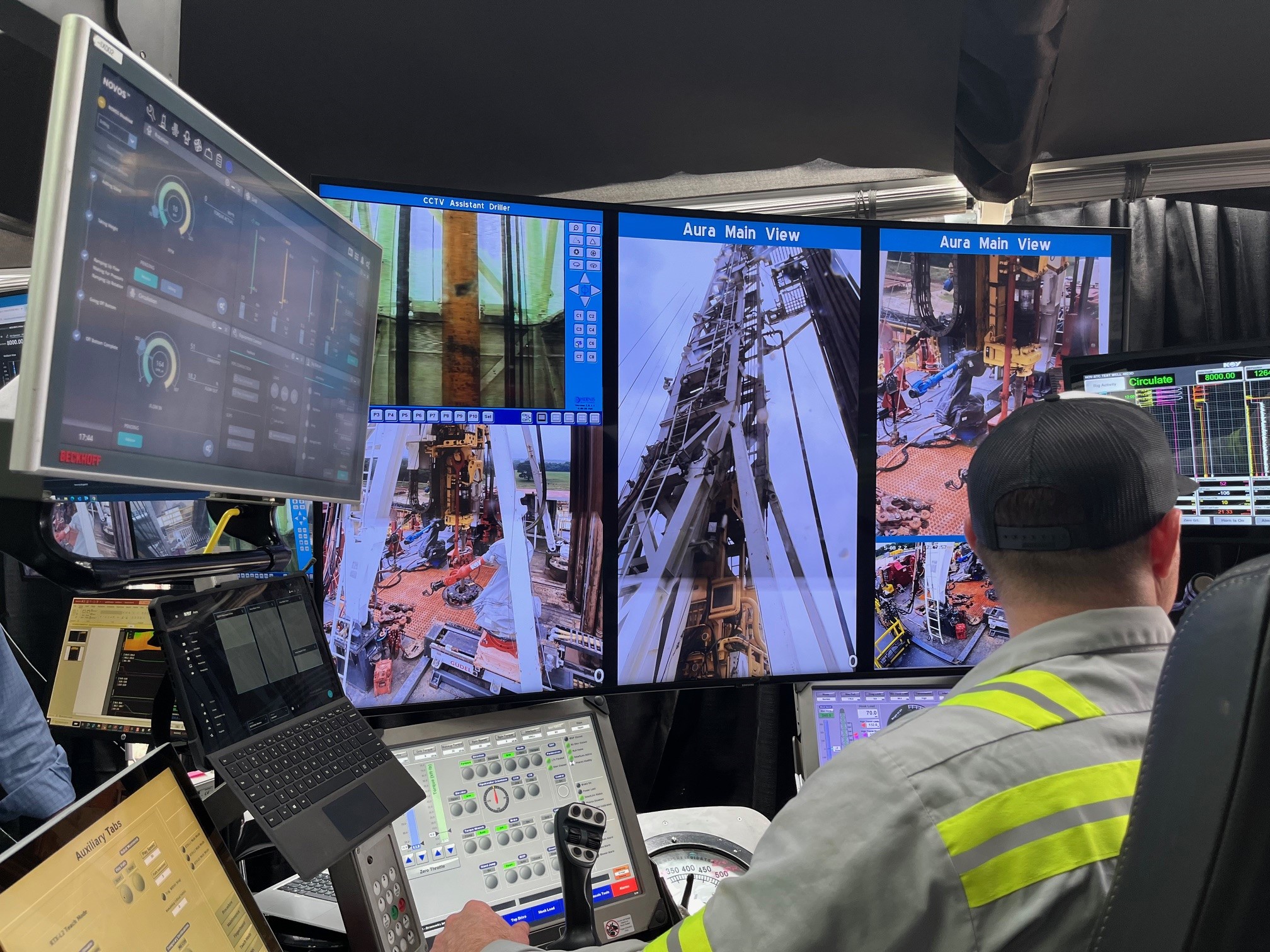
Interconnected technologies work together synergistically to achieve three fundamental objectives of drilling automation: remove danger, improve performance and efficiency, and enhance awareness of the process.
Efficiency gains from drilling processes have limits but offer the crucial advantages of consistency, safety and speed.
Equipment automation
A continuous drive to remove people from the red zone of the drill floor has succeeded to varying degrees over the last few decades. Although some manual processes remain because they are tough to replace, the industry agrees that much more can be done, including offshore, where most of the success has come so far.
By eliminating the variability associated with human operators due to experience and skill level—and influenced by fatigue and weather conditions—the precise and repeatable execution of tasks enables more reliable and consistent drilling outcomes, and reduces downtime and delays.
The ATOM RTX system is the mechanization link between process automation and the execution of drill floor tasks, which include making and breaking connections, as well as racking and tailing pipe on the rig floor and at height on the racking board.
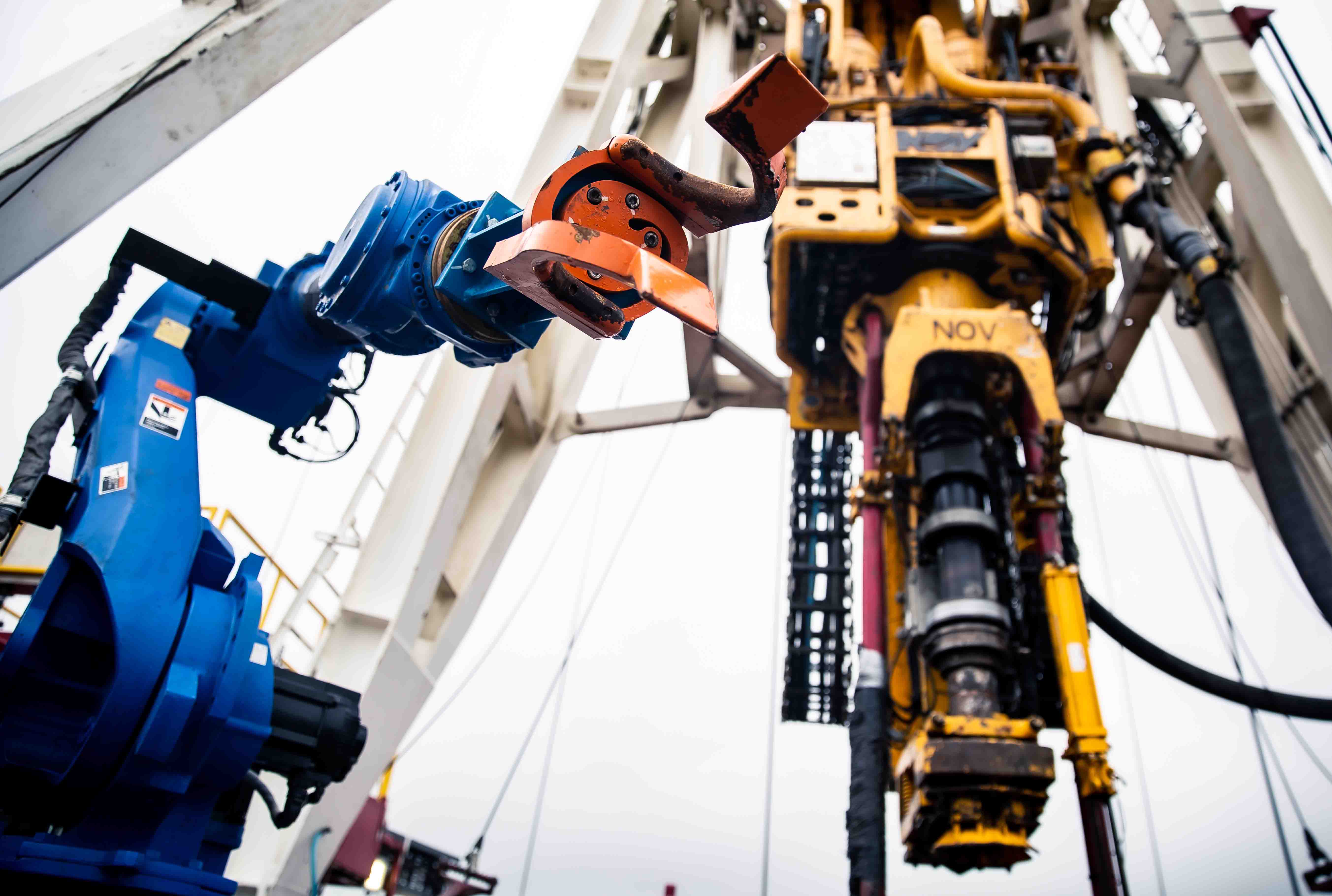
Work continues to push mechanization into bottomhole assembly (BHA) handling, safety valves and casing tailing, the processes and physical tasks that constitute a well program. Developed technologies that are essentially designed to complement each other can be further combined to improve performance.
The current robotic system is intended to be developed and adapted to future tasks. The end of the robot, the end effector, is designed such that it can be configured to new requirements, which is crucial. Even though many processes are well-defined in well construction today, they lack the benefit of advanced digital process automation controls and mechanization. This represents a new design paradigm that could considerably change the way things are currently done in the field, potentially keeping personnel completely clear of dangerous environments.
Process automation
The first benefit of automated processes, consistency, was evident early in the development of the NOVOS platform and architecture. Seemingly simple rig tasks and processes, traditionally requiring manual procedures and training, ultimately proved amenable to advancements in optimization.
A specific example is stump height in setting slips. Small variations in height create after-action effects. For instance, increasing or decreasing the stump height relative to the “last time” means the iron roughneck needs to change the approach height to break the connection. This requires additional time—at least several seconds. The exact timeframe depends on the stump height variance. These seconds add up when completing wells with a large amount of pipe and then tripping several times.
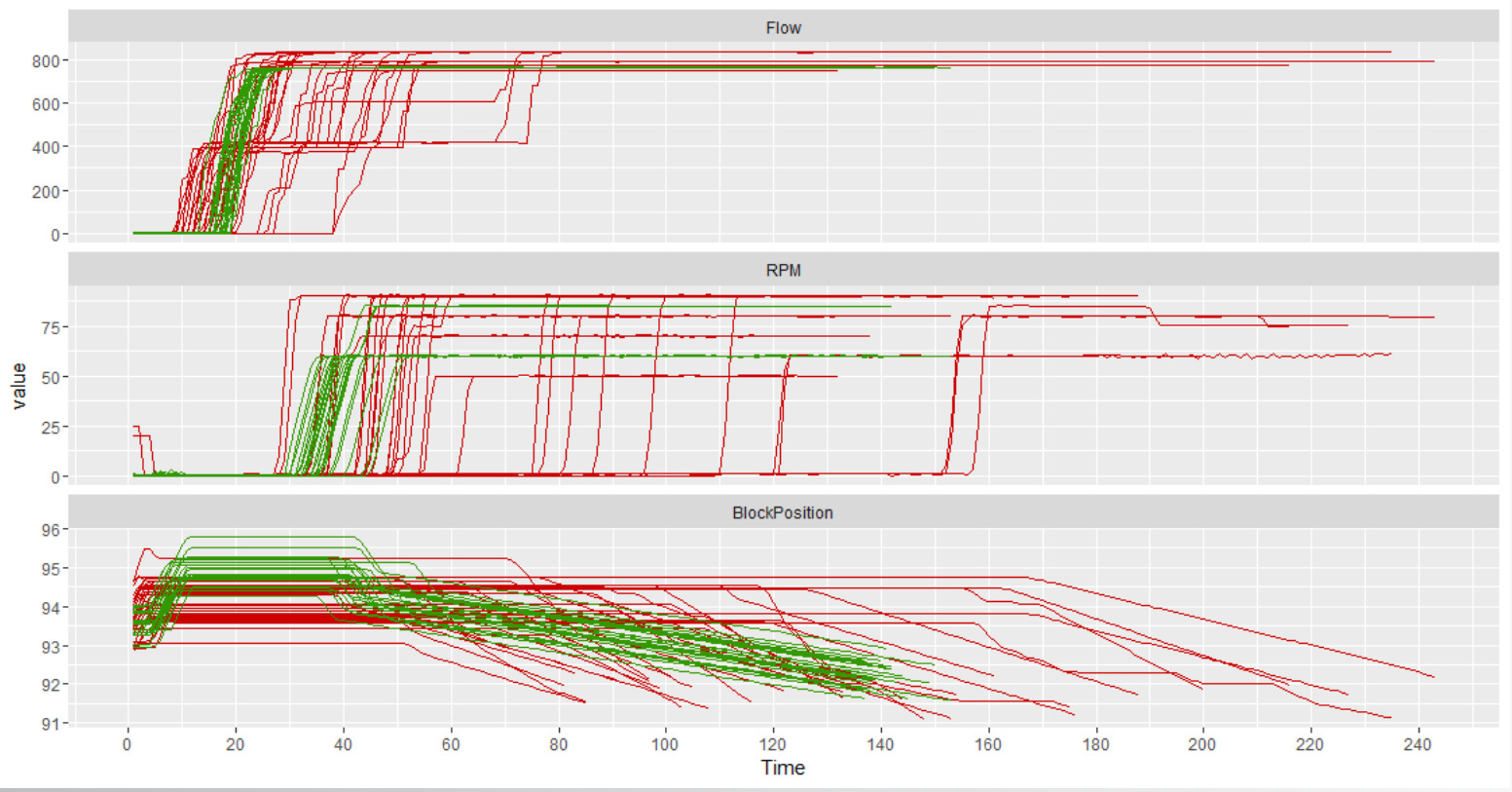
The advantages of consistency extend to activities such as pump ramping and BHA rotation. Some drillers are proficient in consistently executing ramp-ups and rpm changes, but variance still exists because of operator attention span, distractions, mental and physical fatigue, and a range of other factors. Machines do not suffer from those faults and can execute ramp-ups flawlessly on each cycle.
Variance exists in any system regardless of how precise it is, but the process control system architecture has been proven to improve efficiency. It is the control of total variance that generally defines a system as colloquially “better.”
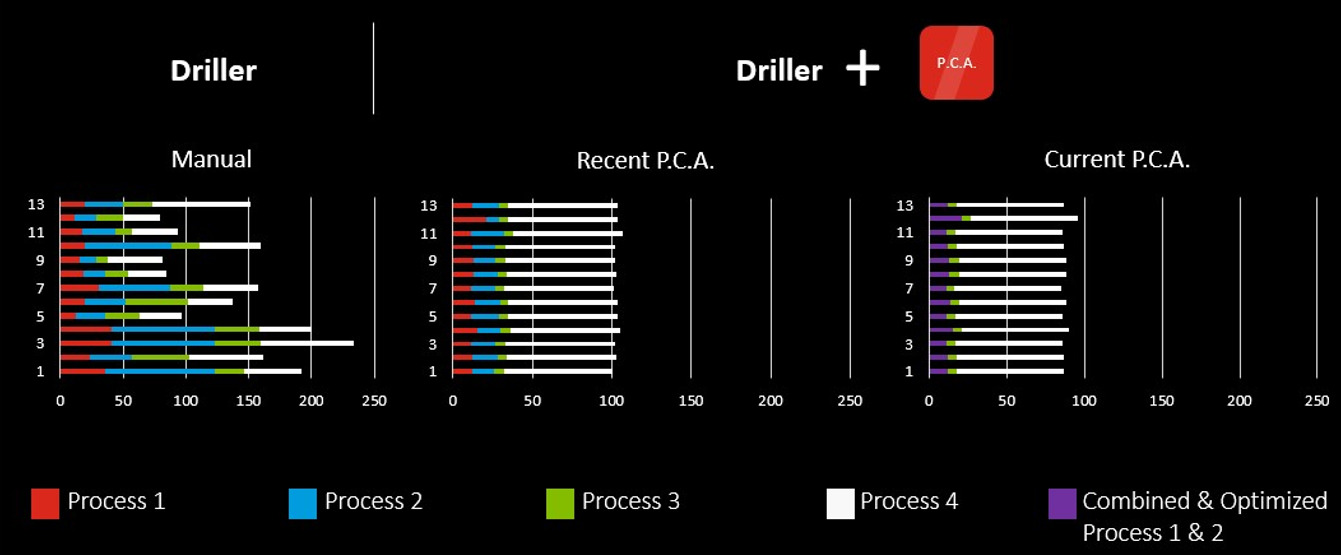
Another aspect of pure time savings in individual steps is the optimization achieved by combining steps with process control automation. The design of a process automation control system allows individual steps to be reviewed and optimized into a more streamlined flow.
Process optimization improves the sequencing of complex systems. As demonstrated with process control automation, coupling process automation with advanced mechanization presents an opportunity to combine manual steps into a more streamlined and optimized operation.
Field performance demonstrates value
Effective performance of process control has been proven from South America to Norway, Thailand to Canada, and from Pennsylvania and West Texas to Alaska, Abu Dhabi and the Gulf of Mexico in both offshore and onshore drilling environments.
Automation advancements have delivered 40% to 67% improvements in drilling and tripping performance across crews and platforms within the same field. While comparing one field to another is challenging due to the differences and the specialized requirements of each reservoir, the underlying truth remains the same. Bringing process automation and mechanization into the same space, along with advanced analytics, combines to deliver consistent results showcasing that an orchestrated approach to technology not only leads to further improvements but also ensures sustained performance. This approach enhances efficiency and leads to safer and more informed decisions in the well programs through better data.
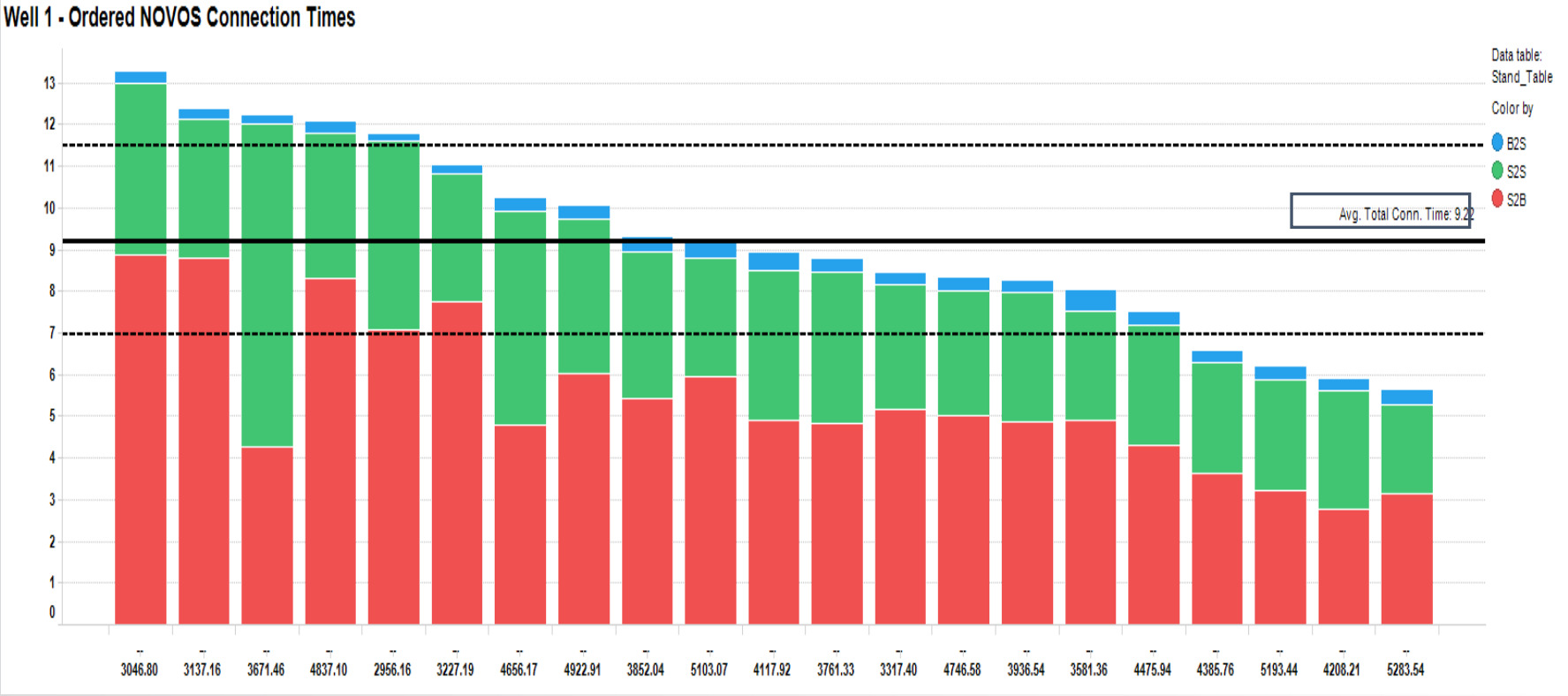
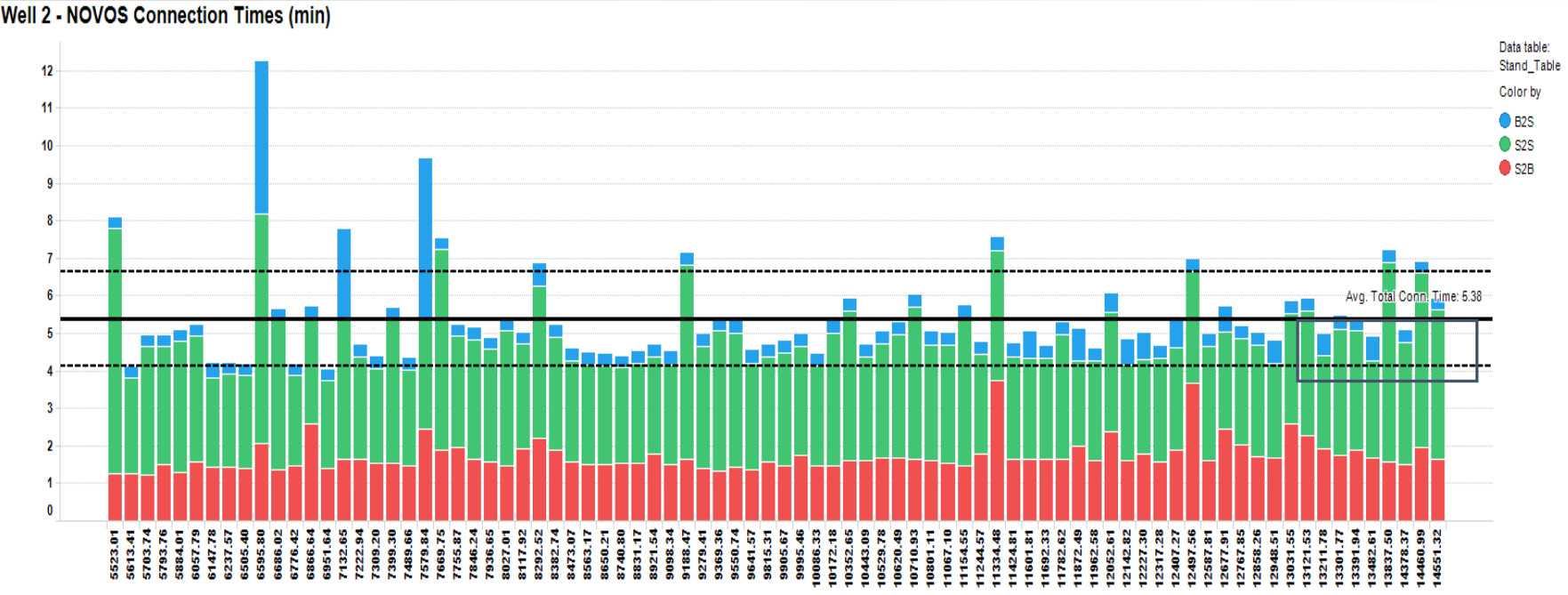
The application of the NOVOS reflexive drilling system in Appalachia shows a distinct improvement in the average connection time as well as consistency throughout the well program. Having consistent results means that the process stages become more predictable inside the well program. This consistency can be the continued improvement of logistics and logistics scheduling, which are also important aspects of well construction.
Drilling rigs employing the NOVOS architecture and proactive support structure have set weight-to-weight (W2W) and slip-to-slip (S2S) connection records in fields worldwide. A drillship offshore Guyana set a record W2W average of approximately 7.86 minutes, while a semisubmersible in the North Sea obtained a record W2W average of approximately 3.41 minutes. On Alaska’s North Slope, this technology delivered the fastest W2W time of 11.16 minutes on an intermediate section of their well program.
Drilling automation processes and autonomy
There are many “wants” in the development of drilling automation processes and autonomy: better control, more stable operation, less vibration, continuous improvement, accurate placement, repeated performance and higher reliability. The list is long and seemingly endless. While some drillers today can consistently deliver on many of these wants, skill sets vary for drillers across a fleet of rigs, and driller fatigue—which leads to suboptimal performance—is a real concern.
Influencing factors like these prevent repeatability and consistency, but machines excel at repeatability and can continually monitor parameters. General alarm systems exemplify this capability and represent one of the simpler ways automated “watching” has been employed over the last few decades.
The drilling system, however, is both human and machine. Increasingly complex drilling systems require constant input from industry professionals to maintain performance standards. Process control automation and autonomy are complementary to crewed operations.
Moving toward autonomy does not mean humans are excluded from decision-making. Instead, humans become empowered to make better decisions. One of the main drivers of process automation is to reduce the operator burden borne in great part by the driller and to improve repeatability and consistency.
The ultimate goal is to provide an interconnect for the numerous systems that provide everything from advisory information to multiple levels of control such that they operate synergistically. The industry is still struggling to determine exactly what that interconnection will look like, but it seems evident that AI systems, which currently play a role, will continue to be essential on the path to automation and mechanization.
Systems that monitor incoming operational data in real time still do not fully utilize the potential of direct bilateral communication with the process control system and automated operations. Well execution must move beyond manually transferring information and files and become a two-way hub of communication. A fully integrated process control system, connected with the mechanization of processes to aid in detailed data collection, is essential for achieving this standard of well construction.
Rig design optimization
Dominant design is the engineering principle that a certain design maintains dominance in an industry or space but, at some point, becomes challenged by a new design. An example is the robot vacuum, which no longer resembles the dominant design of traditional vacuum cleaners.
As automation process control and mechanization of physical drilling processes continue, a new opportunity emerges to challenge the status quo of rig design. This presents a chance to uniquely transform the system and enhance the optimal layout.
Fully autonomous rig operations
Fully autonomous drilling is seemingly a world away. However, there was also a time when automated pipe handling and the capability to create deep lateral reach wells seemed far-fetched.
Drilling technology continues to move operationally toward total autonomy. In early 2023, NOV removed the driller’s cabin from the Prime 1 test rig at its Springett Technology Center to develop all the ancillary systems needed to support that function. The ATOM RTX system was the stepping stone that truly enabled the driller’s cabin to be removed.
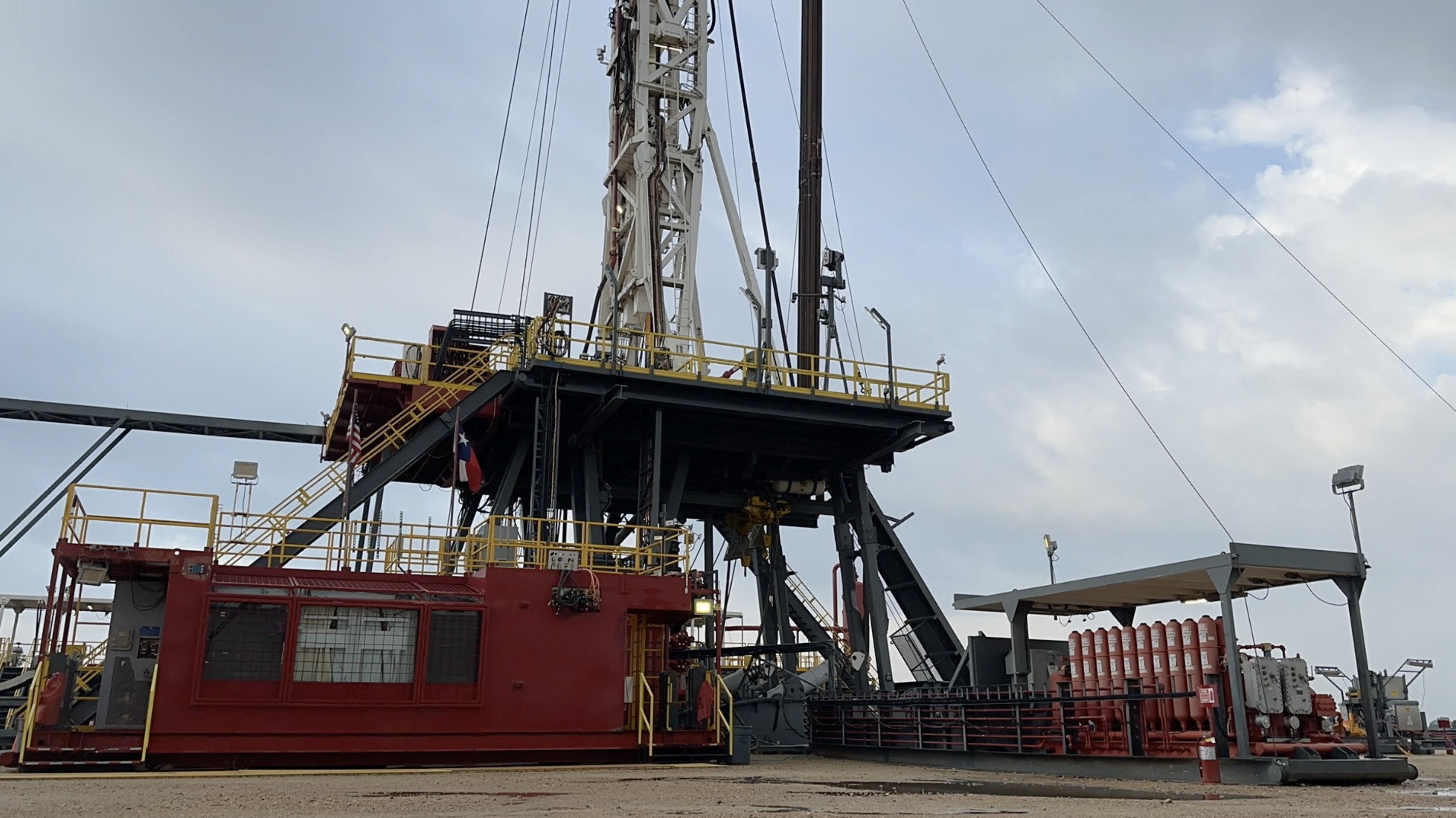
It is important to recognize that the technological gains of autonomy are not exclusive to drilling processes. Other well construction processes, such as casing, cementing and completion can also benefit from continued development, and the scope of automation can include field development beyond well construction.
Challenges
Major barriers to process automation and autonomy include the rising cost of finding a solution and the challenge of bringing a concept to market. Market conditions often preclude wide-scale adoption. While the desire exists at every level of the industry to move forward, the volatile nature of the oil and gas industry has not been especially conducive to finding the necessary partners to fully develop every aspect of the process automation system.
The road ahead
The next technological leap in automation technology involves continuous small steps that build on previous successes. The building blocks of performance and process optimization are in place, as is the ability to sustain improvements despite changes in industry personnel and required skill sets. Successes will continue to grow as the synergy between process control and mechanization technology matures.
Recommended Reading
Liberty Capitalizing on Power Generation as Completions Stay Flat
2025-01-31 - New Liberty Energy Inc. CEO Ron Gusek says company is ‘uniquely positioned’ to deliver modular units for data centers.
Oxy CEO: US Oil Production Likely to Peak Within Five Years
2025-03-11 - U.S. oil production will likely peak within the next five years or so, Oxy’s CEO Vicki Hollub said. But secondary and tertiary recovery methods, such as CO2 floods, could sustain U.S. output.
Shell Takes FID on Gato do Mato Project Offshore Brazil
2025-03-23 - Shell Plc will be the operator and 50% owner, with Ecopetrol holding 30% interest and TotalEnergies 20%.
TGS Launches Advanced Imaging Centers for Petrobras
2025-01-21 - TGS' 4D technologies will provide enhanced subsurface clarity in basins offshore Brazil for Petrobras.
APA's Apache Reports Another Oil Discovery on Alaska's North Slope
2025-03-17 - APA Corp. and its partners plan flow tests after the success of the Sockeye-2 exploratory well.
Comments
Add new comment
This conversation is moderated according to Hart Energy community rules. Please read the rules before joining the discussion. If you’re experiencing any technical problems, please contact our customer care team.





